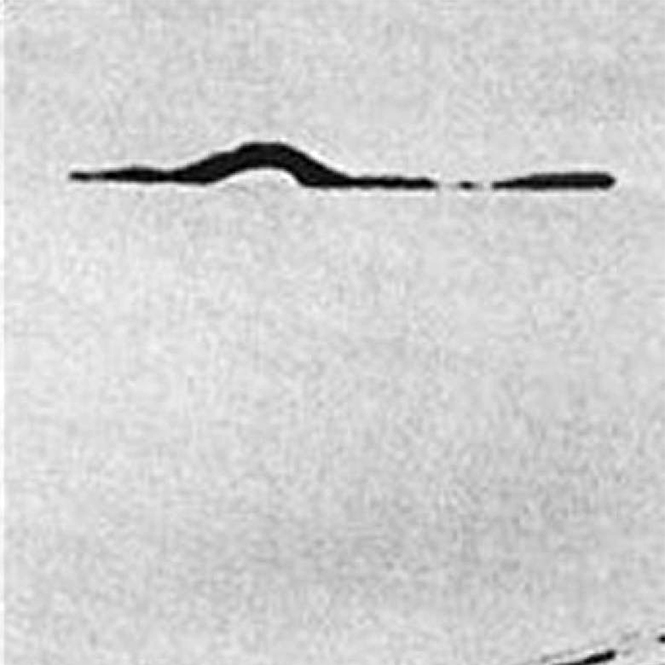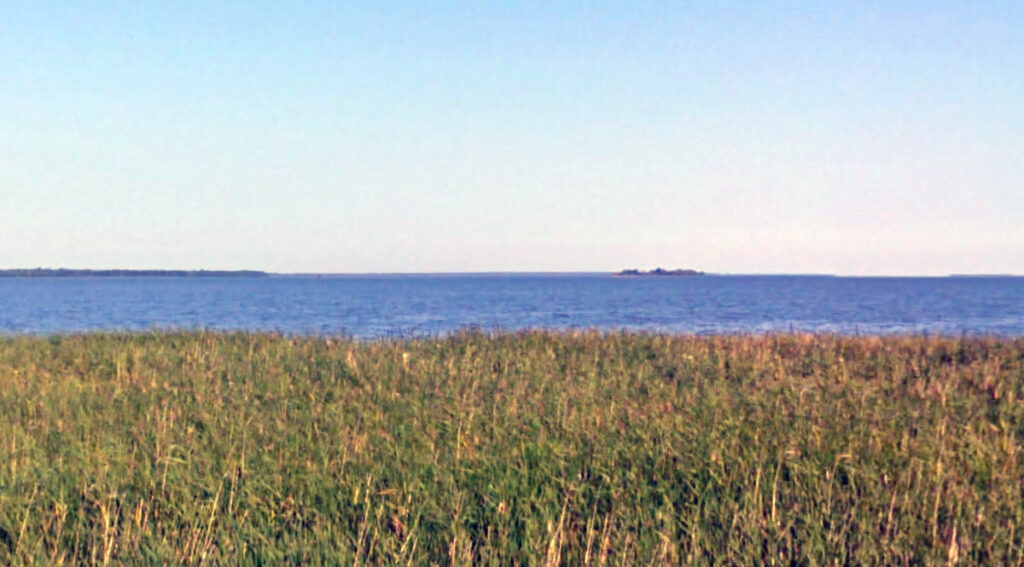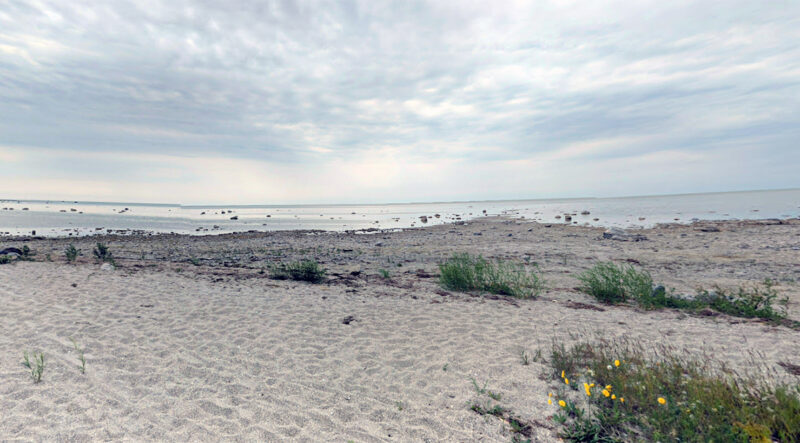Canada’s heart beats in Manitoba. As does its sea serpent folklore.
All three of the province’s largest lakes — Manitoba, Winnipeg and Winnipegosis — are revenants of the glacial waterbody, Lake Agassiz, which was formed 14,500 years ago. And they all have their mysterious denizens of the deep that capture visitors’ imaginations.
In Lakes Winnipeg and Winnipegosis, there is Winnipogo, and in Lake Manitoba, there is Manipogo, which has a higher profile than the other two. Both alleged sea serpents take their names from their home bodies of water and Ogopogo, Lake Okanagan’s famous cryptid.
Lake Okanagan is where cryptozoological researcher John Kirk has spent most of his time, but he is well acquainted with the lore of Manipogo, the 30-foot-long dark creature that was the subject of an expedition in the 1950s.
A group of journalists set out to find the cryptid in the summer of 1957. Richard Freeman referenced the journey in his 2019 book Adventures in Cryptozoology. Solemn Fleury was with them on the expedition and alleged that Manipogo attacked him before he went scuba diving in the lake.
On July 24, 1960, 20 picnickers along Lake Manitoba witnessed Manipogo, which prompted University of Manitoba zoology professor James McLeod to investigate the cryptid along with Siggi Oliver of the Provincial Fish and Game Department. Another mass sighting of the cryptid — or two cryptids — was in August 1960 when 17 more witnesses spied the creature from the shore. One of the witnesses was land surveyor Tom Locke, who coined the name Manipogo and would later give the name to a provincial park.
Even a photograph of Manipogo was snapped by fishermen Richard Vincent and John Konefall, in 1962, which depicts a long serpentine creature with humps.
In his book, In the Domain of Lake Monsters, Kirk said that most sightings of Manipogo ended after 1962.
“It’s about five or six different lakes that something’s been seen,” Kirk said, during a late October phone conversation. “Manitoba, Winnipeg and Winnipegosis have all had sightings as well. Manipogo really shouldn’t be used (to describe) unless it’s in Lake Manitoba.
“They’re fairly distinct. I can’t see them being the same creature in every single lake. I mean, not all of them are joined up by rivers and streams and creeks,” he added. “The fluidity and mobility are extremely limited because of the vastness of those Manitoba lakes not a lot of people have been willing to take it on.”
Which makes investigations like the ones in 1957 and 1960 a tough grind, Kirk admitted.
“Trying to find these things in a lake that size is an impossibility,” he said. “What do you do? You just collect sightings because it’s too herculean a task to attempt. It just doesn’t work.
“Unless you had the Royal Canadian Navy and the Canadian Coast Guard to go cruising on that lake and using sophisticated sonar; you haven’t got a snowball’s chance in hell in finding anything in the Manitoba lakes,” he added with a laugh. “Those Manitoba lakes are going to remain a mystery forever.”
Accounts of Manipogo have it pegged at a length of 30 metres to 70 metres long. Kirk suspects anything smaller than that can be attributed to a sturgeon.
According to Loren Coleman and Patrick Huyghe in their book The Field Guide to Lake Monsters, Sea Serpents, and Other Mystery Denizens of the Deep, there are at least 140 reported lake monsters alone in Canada, not including ocean sightings like Caddy, off the coast of Vancouver Island. The numbers are not surprising, given Canada has the largest number of freshwater lakes in the world with 31,752.
Keeping track of sightings
Chris Rutkowski is a name synonymous with high strangeness in Manitoba.
He’s known for releasing an annual UFO report, but he also has an affinity for cryptids like Sasquatch and sea serpents. They’re all in his wheelhouse as his interest in the Fortean began in the 1970s.
“I was just fascinated by the unusual cases where science was having some difficulty in explaining what people had seen,” the 65-year-old said, during a November Zoom call.
His second book, Unnatural History, was a deep dive into cryptids, UFOs and ghosts in Manitoba, and Manipogo was included in the volume.

The 1962 photo of Manipogo.
“Some of the classic cases all are from Lake Manitoba,” he said, adding that he spoke with a master angler who had seen Manipogo. “He told me he had encountered a thing, with a neck and a head, come out of the water and moved past his boat. And he said, ‘I’ve been fishing for all my life and this was not a sturgeon or a moose or anything like that’.”
The last documented sighting Rutkowski recalls was in 2012.
“Manipogo is certainly very well known,” he said. “Here in Manitoba there’s a provincial park and the beach there is spectacular — fantastic sand. The concession stand there actually sells Manipogo burgers, which might explain where they’ve all gone.”
Humour aside, he added that there are sightings of lake monsters in Lake Winnipeg (Winnipogo), West Hawk Lake and Lake Dauphin. There are also plenty of Sasquatch sightings in and around Cedar Lake. West Hawk Lake is just north of another landmark for high strangeness, Falcon Lake.
“West Hawk Lake is a meteorite crater and it already has some weirdness associated with it,” Rutkowski added. “At the bottom of the lake, they have picnic tables and signs and fun little things to discover.
“(And) because it’s a meteorite crater, the rock is fractured, so there are a lot of little caves and crevices down there.”
The sightings do parallel sightings of Manipogo in Lake Manitoba and underscores the history of high strangeness. Keeping track of them allows Rutkowski to speak with the witnesses.
Most of the reports of strange creatures in lakes Manitoba and Winnipeg could be attributed to sturgeon but during the late 19th century and early 20th centuries, it was hunted to near extinction for its oil.
“There are stories about how on Lake Winnipeg, they would catch them and stack them like cordwood on the boats and bring them to land and use them as fuel for the rest of the winter,” Rutkowski added.
Nowadays, Manitoba Conservation only allows recreational catch-and-release of sturgeon.
What’s in a name?
Manipogo Provincial Park earned its name in 1961 as a homage to local folklore.
Nestled within the confines of Toutes Aides Bay, the park was named after the alleged lake monster by provincial land surveyor Tom Locke, while he was working with the province. Many of Manitoba’s provincial parks and recreation areas were founded when Dufferin Roblin was premier of the province.
There’s a sense of child-like enthusiasm when Manitoba’s Head of Interpretation for Manitoba’s Trails and Parks Division, Sloan Cathcart, talks about the limited number of sightings within the area.
“There’s not a lot of sightings. There are some media reports now and again if somebody sees something unique in the water,” he said during a December phone conversation.
The last known sighting of Manipogo, according to Cathcart was in June 2014 during the Assiniboine River flood.
“There were some cottages evacuated from around the south basin of the lake and some security officers were driving around they spotted something unique swimming in the water,” Cathcart recalled, adding that there are sturgeon that inhabit the body of water.
What’s also common around Lake Manitoba are moose, and often, when something uncanny is sighted, it’s attributed to large ungulate.
“When stories and sightings come out, the critics out there will like to think it’s a sturgeon breaching on the water, it’s floating logs washing away from the shoreline,” he said. “Moose are common around the lake. Sometimes they can make your imagination go wild if you see a cow and calf moose swimming along.
“If you’re skeptical you’re going to blame it on all kinds of things, but if you want to believe, who knows what could be swimming out there,” Cathcart added. “It’s such a big lake and lots of limestone cliffs, caves and crevices around the shorelines.”
Indigenous people have reported seeing the creature for centuries, but the first recorded sighting came from Timber inspector C.F. Ross and a friend who witnessed a single-horned animal that looked like a dinosaur in 1935.
Manipogo Provincial Park has about 100 campsites spread across 61 hectares and receives about 50,000 visitors per year.

Lake Manitoba from Kinosota Front Road in Kinosota.
Manitoba’s Lake Monster History
Indigenous film director Sonya Ballantyne always remembered her grandmother Virginia sharing stories about something lurking beneath the waves, but in Cedar Lake, just north of Lake Manitoba.
Cedar Lake is connected to Lake Winnipeg via the Saskatchewan River, and its levels are controlled by the Grand Rapids dam in Hybord, Manitoba. Though Cedar Lake is not connected to Lake Manitoba, it’s part of ancestral Lake Agassiz.
It also has one of the highest concentrations of Chemawinite amber in the world, tying itself to the Cretaceous period.
But it has also had its own denizen lurking beneath the surface. The first sighting of an out-of-place critter was in 1909 by Hudson’s Bay Company fur trader Valentine McKay.
Ballantyne grew up in the Misipawistik Cree Nation, and her grandmother lived on the Chemawawin Cree Nation reserve. In 1962, the Manitoba government began development of a hydroelectric dam in Grand Rapids.
Residents of Chemawawin were forced to relocate to Easterville after the dam flooded out the original reserve. Ballantyne always wanted to visit the original home of her grandmother, but it was discouraged.
“I asked my grandmother if we could ever go visit there and she said we couldn’t because there was a snake that lived in the water,” Ballantyne said, during a November Zoom conversation from Zurich, Switzerland. “She made it sound like it was something that was protecting the area.”
Snake stories were commonplace during Ballantyne’s youth. One particular story that stood out to her was a swimming hole they used to visit when they were kids called the Boondocks on the other side of the spillway.
The story behind the Cedar Lake serpent was that the snakes would live in the rocks and would allegedly attack people. Snakes are not commonly seen as far north as Misipawaistik as they are found in the southern regions of the province. The Western Hognose, the Smooth Green Snake, the Northern Red-Bellied Snake and three types of Garter Snakes (Plains, Eastern and Red-Sided) call southern Manitoba home.
“I always loved the way she talked about it because I am a huge fan of horror and sci-fi,” Ballantyne admitted, adding prehistoric history and dinosaurs were also captivating. “So, her trying to scare me away actually made me more interested in visiting.”
Although she tied the sighting of a lake serpent to just another sturgeon sighting, Ballantyne admitted her grandmother never lied to her about stories of the uncanny.
“She had a real poetic way of talking about her original home,” she said. “She used to call it the place with no lights because they didn’t have electricity.
The allure of her grandmother’s story conjured images of the Mirkwood Forest from the Lord of the Rings universe, where the webs that the spiders made “sucked out all the light.”
“Everything she told me about that place made it sound more and more magical and I think this will finally be the summer I get out there to see if that snake is real,” Ballantyne said, adding that Cree beliefs do not separate the spirit world from the physical world.
“Although I’m pleasantly skeptical, I still am open,” she admitted, with a laugh. “I’m one of those, ‘I want to believe’ people.”

